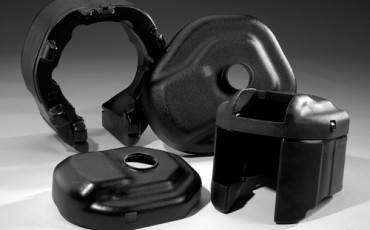
What’s the ideal wall thickness in rotational molding? It’s the thinnest possible wall that can meet the designer’s functional requirements and the rotational molder’s processing requirements. Because wall thickness has a direct effect on material usage and cycle times, it’s important to avoid walls that are too thick. Yet, it’s also critical to design and mold walls that are thick enough to provide essential strength.
Rotomolding’s Wall Thickness Advantages
Relative to their size, rotomolded parts can have thinner walls than similar parts that are produced by other plastic manufacturing methods. Unlike blow molding, a process that tends to produce thin outside corners, rotomolding tends to produce an increasing wall thickness on the outside corner of parts. In large parts especially, this added thickness and increased strength at the outside corners is an advantage.
Rotational molding also lets part designers increase or decrease the thickness of the part wall after the mold has been built and sampled. Finalizing the wall thickness can even wait until after in-use testing. Other plastics manufacturing methods, including injection molding, don’t offer this kind of flexibility after a mold has been made.
Uniform wall thicknesses are also easier to achieve with rotational molding than with other plastics processes. In fact, rotomolding can hold wall thickness uniformity to within ±10%. Plus, although it’s rare for walls to have a minimum thickness that’s less than .125”, Gregstrom can mold walls as thin as .090”, depending on the part design.
Design Assistance and Rotational Molding
Thicker walls aren’t the only way to design stronger plastic parts. Kiss-off ribbing is a term that’s used in rotational molding to describe a solid, reinforcing structure that transmits a load from one nominal wall to another. Kiss-off ribs add strength and dimensional stability, but they also help to prevent warpage across large, flat surfaces.
As a rotomolder with over 75 years of plastics manufacturing experience, Gregstrom can provide your engineering team with advice about designing walls that offer the same or greater strength, but that use less material. We can also answer your questions about kiss-off ribs and provide you with recommended wall thickness for specific types of rotational molding materials such as LLDPE, HDPE, and polypropylene.
If you’re ready to get started, contact us.


